The Baltic States, St. Petersburg, and Moscow
September 26 - October 14, 2013
Part Five - Moscow, Russia
Page Four - The Kremlin

On the day we toured inside the Kremlin, we stopped to see the Tomb of the
Unknown Soldier. Dedicated on May 9, 1967, the 22nd anniversary of the
Russian victory over Germany in WWII, the red granite monument partially
seen here, contains the body of an unidentified Soviet soldier, one who
helped stop the German attack at the village of Kryukovo, just outside of
Moscow. The Changing of the Guard was taking place while we were there.
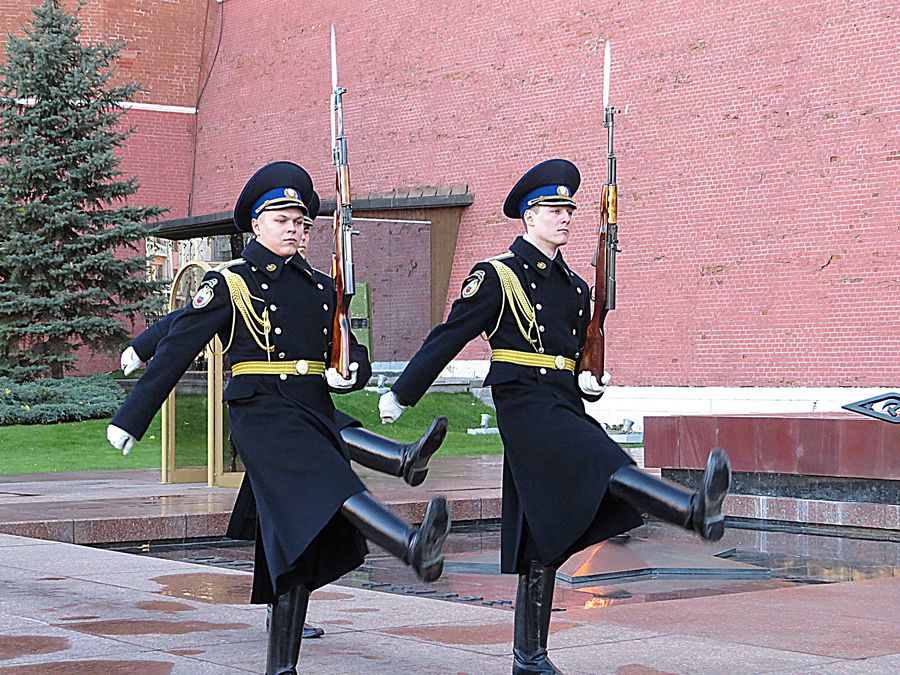
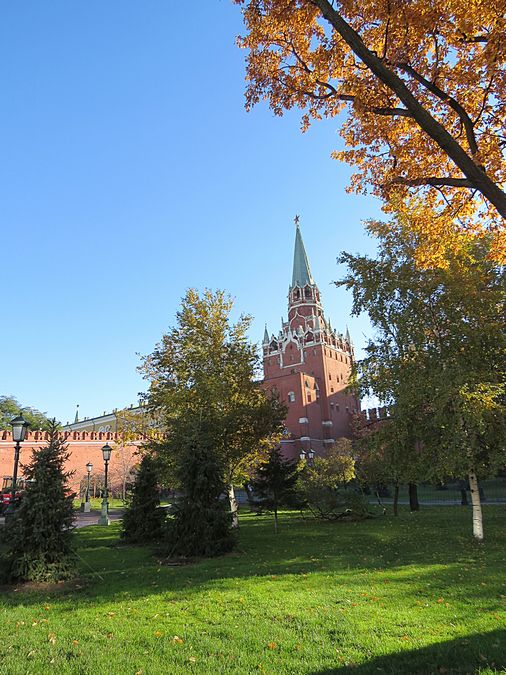
Alexandrovsky Garden or Alexander Garden outside the northwest Kremlin
Wall. It was laid out in the 19th century and is named after Alexander I. The
Neglinnaya River once flowed here, but the river now runs underneath
the garden through an underground pipe.
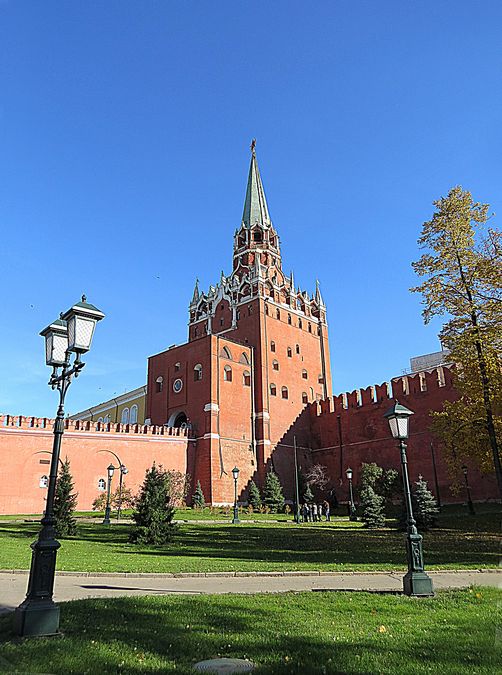
We entered the Kremlin through the entrance at the Troitskaya Tower,
shown here. It is the tallest tower in the Kremlin wall. It is linked to the
Kutafya Tower by a bridge that used to span a moat. Its subterranean
chambers were onced used as prison cells.

After waiting in a long line outide this gate and walkway, we stood in another
line to actually walk into the Kremlin fortress. Shown here is Kutafya Tower,
erected in 1516. It once defended the approach to the drawbridge that linked
Alexander Garden to the Kremlin. Kutafya Tower is the public entrance to
the Kremlin.
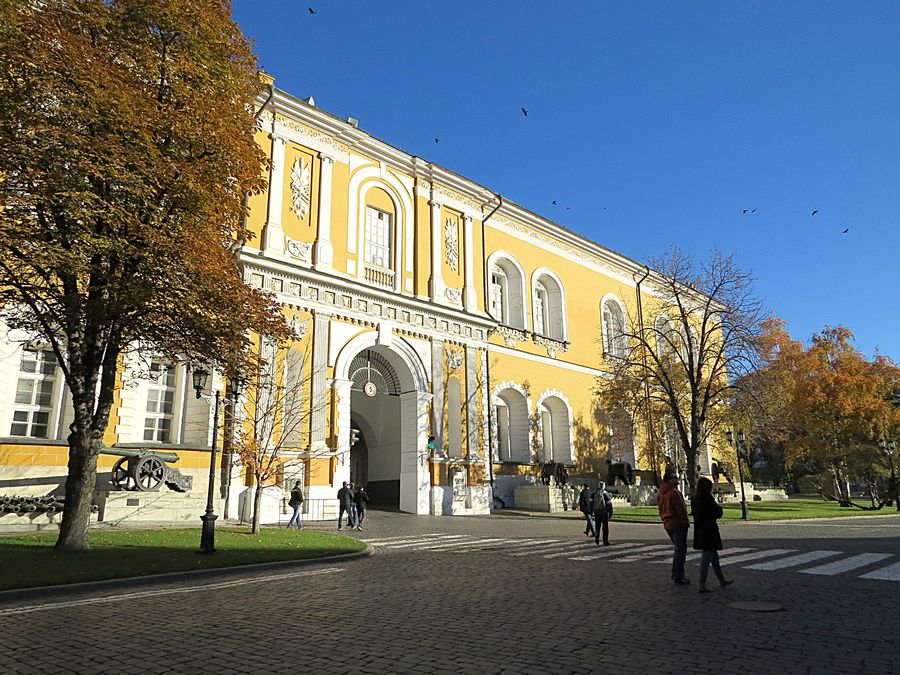
The Arsenal, which is to the left as you enter the Kremlin. Commissioned in
1701 by Peter the Great, the weapons arsenal was partly destroyed by fire
as Napoleon stormed the city in 1812. Its present form dates from the early
19th century when it was given its yellow color. Today it houses government
offices and is closed to the public.
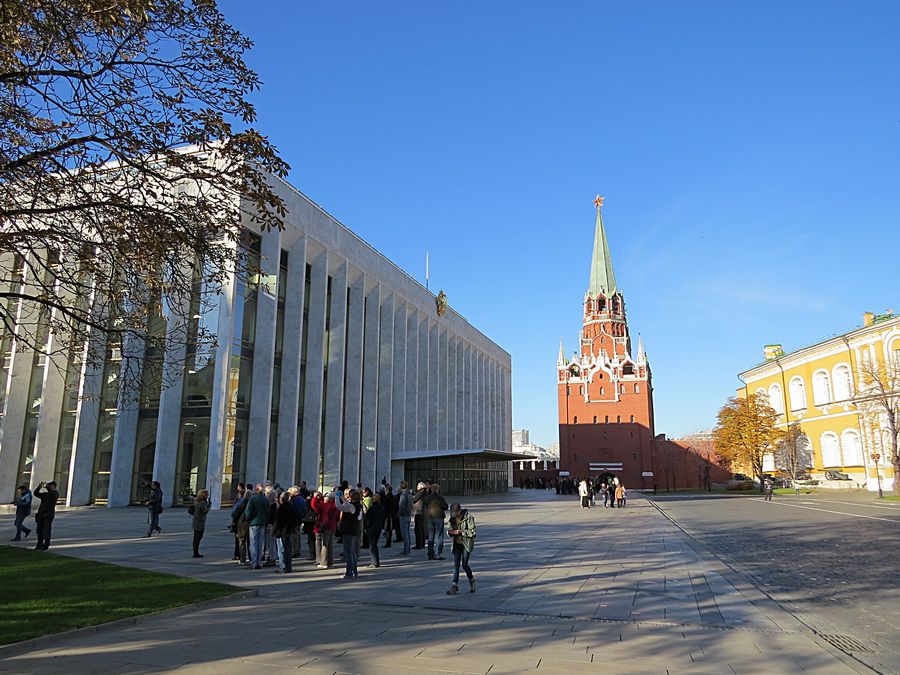
The State Kremlin Palace on the left, Troitskaya Tower in the middle, and
the Arsenal Building on the right. The State Kremlin Palace was built in
1961 to accommodate meetings of the Communist Party delegates from
across the country. Now it is affiliated with the Bolshoi Theater and is used
for concerts, faashion shows, and ballets.

Closeup of Troitskaya Tower.
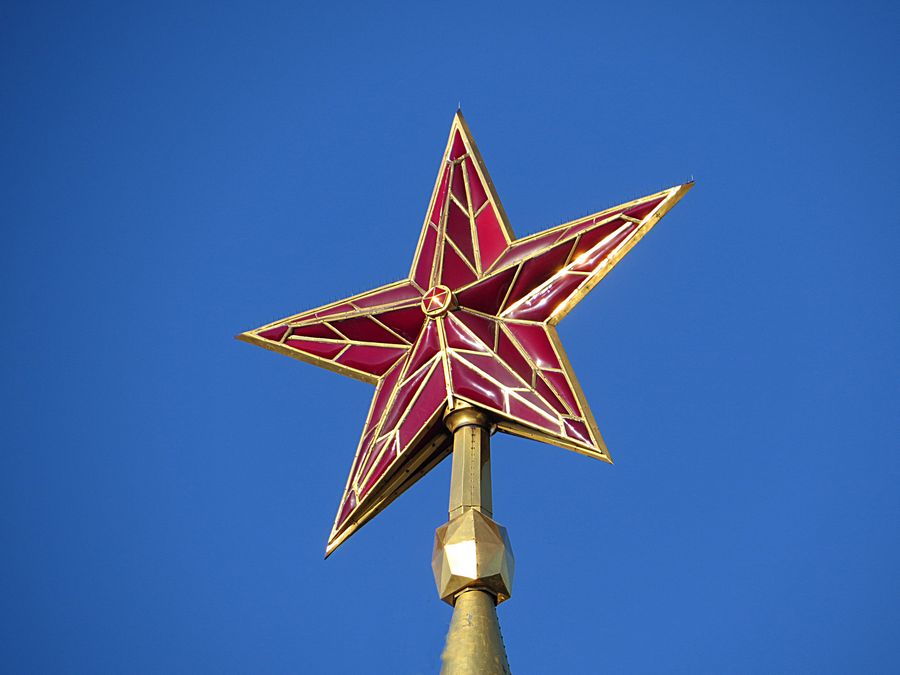
The red star atop Troitskaya Tower.

Cathedral of the Twelve Apostles - built in 1655-56 by Patriarch Nikon, this
was used as his private church. An exhibit here shows icons removed from
other Kremlin churches destroyed by the Soviets.
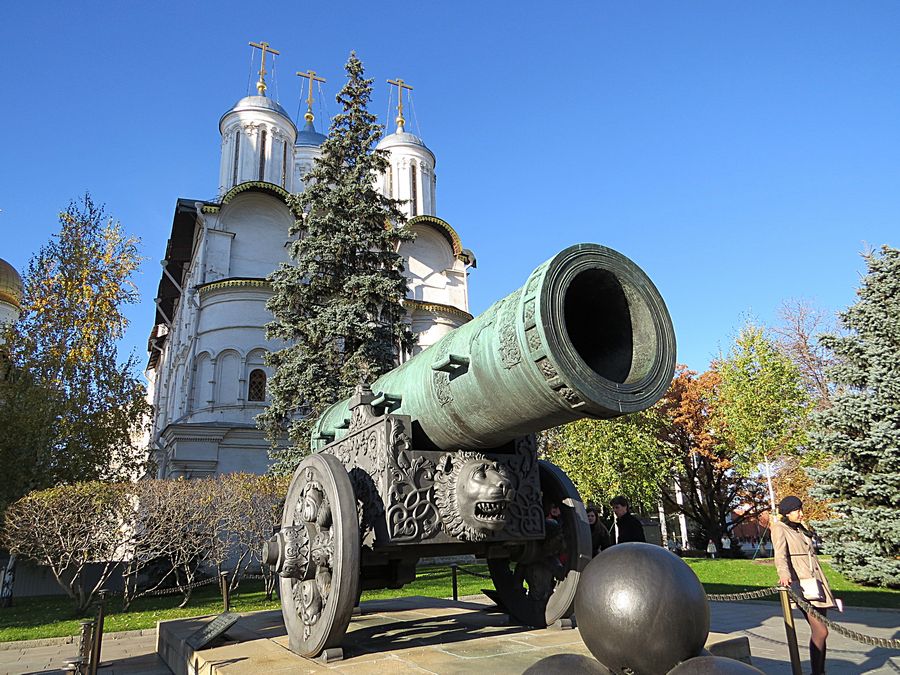
Tsar Cannon - This huge piece of artillery has the largest caliber of any gun
in the world. But, it has never fired a single shot. Cast in bronze in 1586, it
weighs 40 tons and is 17 1/2 feet long. Its present carriage was cast in 1835
solely for display purposes.
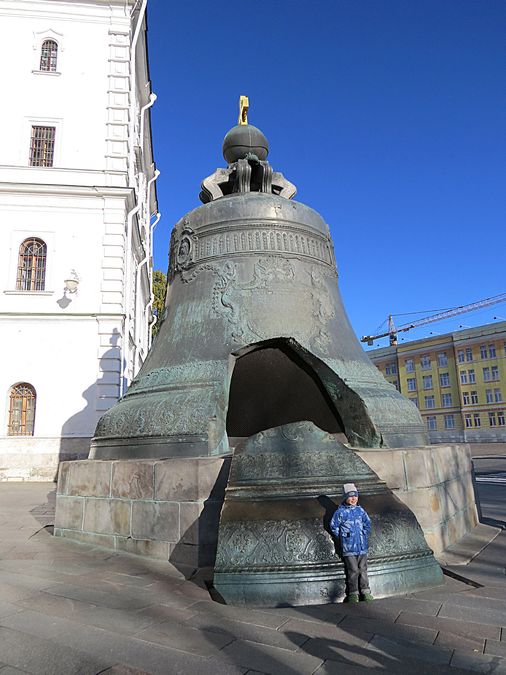
Tsar Bell - The world's largest bell is also the world's most silent. It has never
rung. Commissioned in the 1730s, it was damaged when it was still in its
cast. It weights more than 200 tons and is 20 feet high.

Cathedral of the Archangel - It was commissioned by Ivan the Great during
whose reign there was much new construction in Moscow and in the Kremlin
in particular. The cathedral was built in 1505-09. Until 1712, when the Russian
capital was moved to St. Petersburg, it was the burial place of Russian princes and tsars.
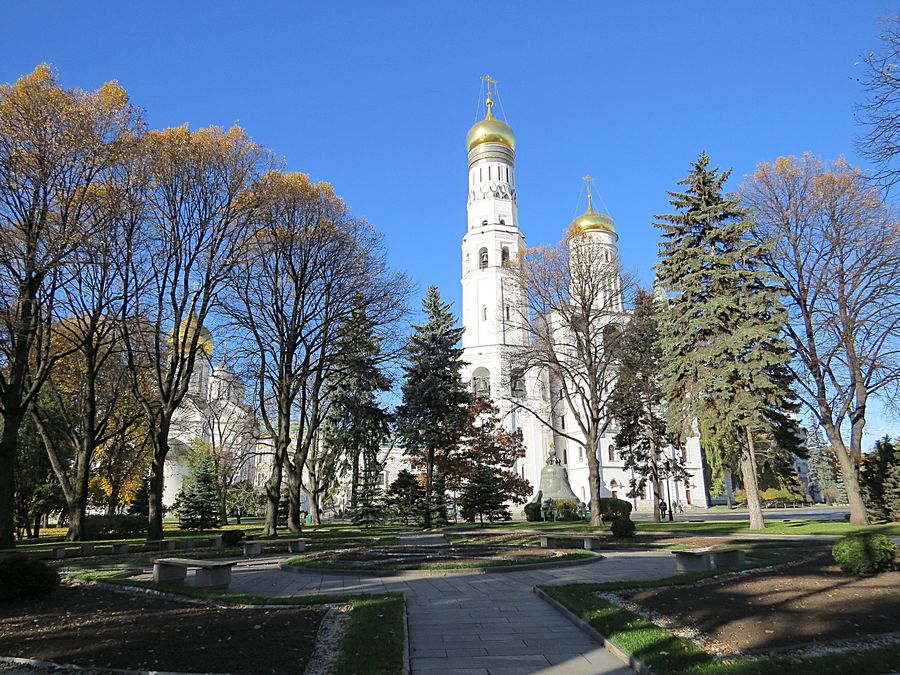
Ivan the Great Bell Tower - The octagonal main tower of the tallest structure
in the Kremlin rises 263 feet. The first bell tower was erected here in 1329.
It was replaced in the early 16th century, during the reign of Ivan the Great.
In 1600 the main tower was rebuilt, crowned by an onion-shaped dome and
covered with gilded copper. For many years, it served as a watch tower.

We walked along a walkway above the Kremlin wall for great fall views of
Moscow and the Moscow River.
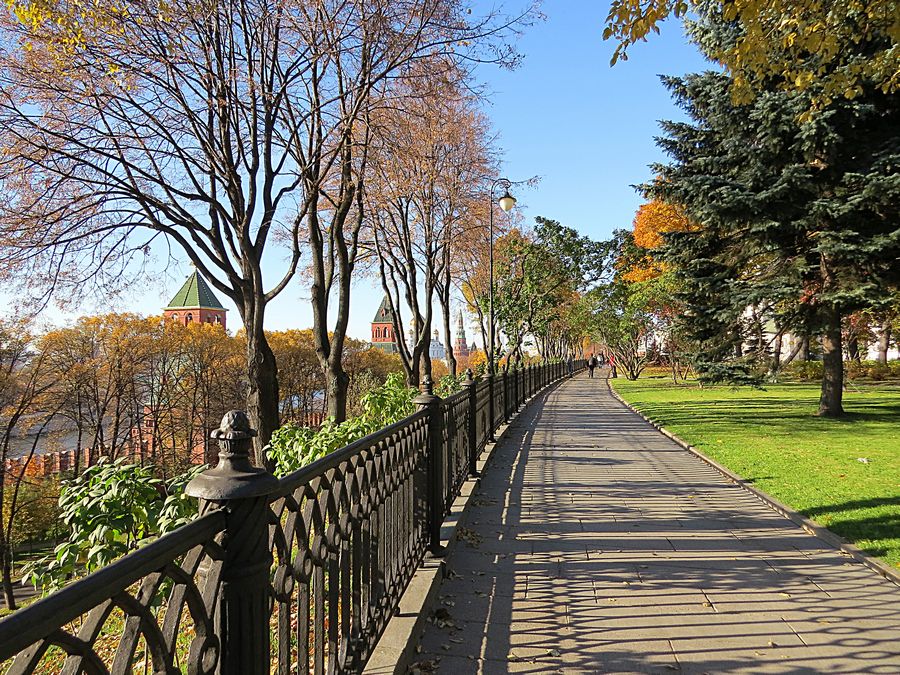

Ivan the Great Bell Tower from another angle as seen from the walkway.
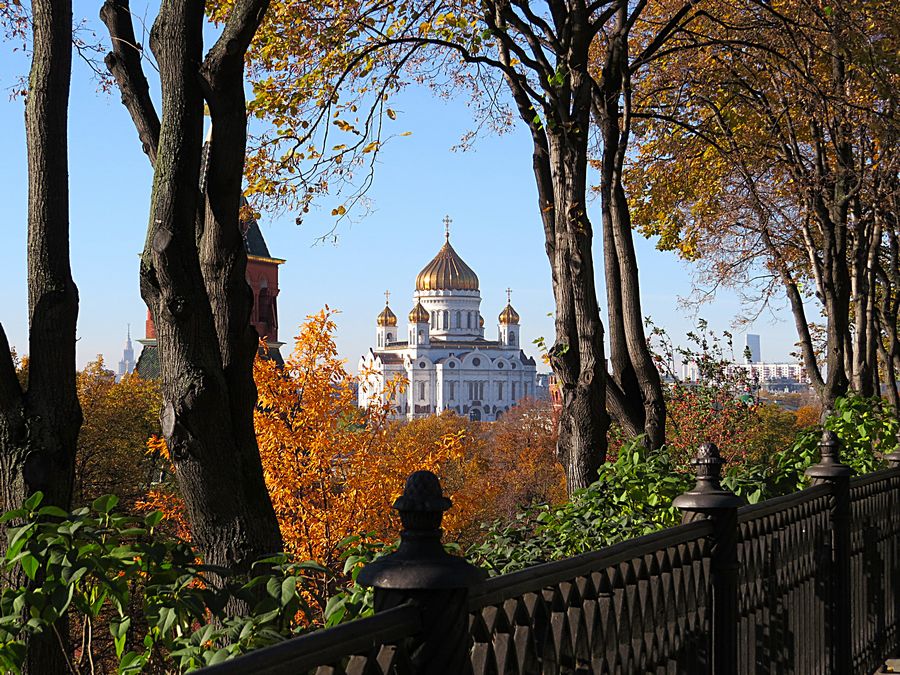
Cathedral of Christ the Saviour in the distance



Assumption Cathedral (on the left) and Bell Tower of Ivan the Great in
Cathedral Square of the Kremlin. The annex of the bell tower is used for
temporary exhibits of items from the Kremlin collection.

The Assumption Cathedral is one of the oldest structures in the Kremlin.
It was built in 1475-79. Until 1712, when the Russian capital moved to
St. Petersburg, this was Russia's principal church. This is where the crowning
ceremonies of the tsars took place, a tradition that continued even after the
capital was moved to St. Petersburg. After the Bolshevik Revolution, the
church was turned into a museum, but in 1989 religious services were
resumed on major church holidays.

Closeup of Assumption Cathedral
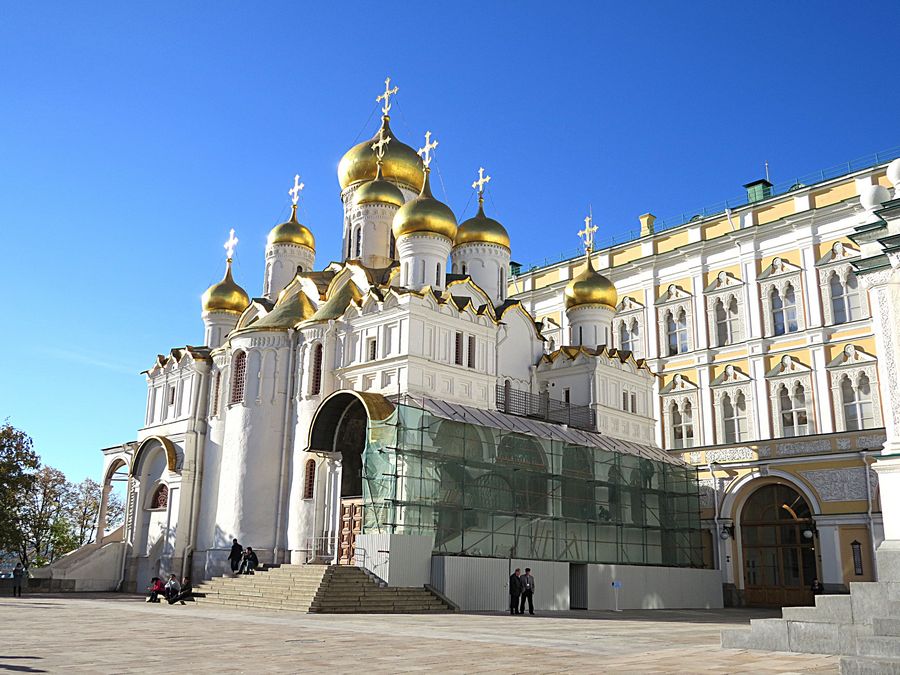
Annunciation Cathedral - It was the private chapel of the royal family. In the
15th century a triangular brick church was erected on this site. It was rebuilt
in the 16th century during the reign of Ivan the Terrible.
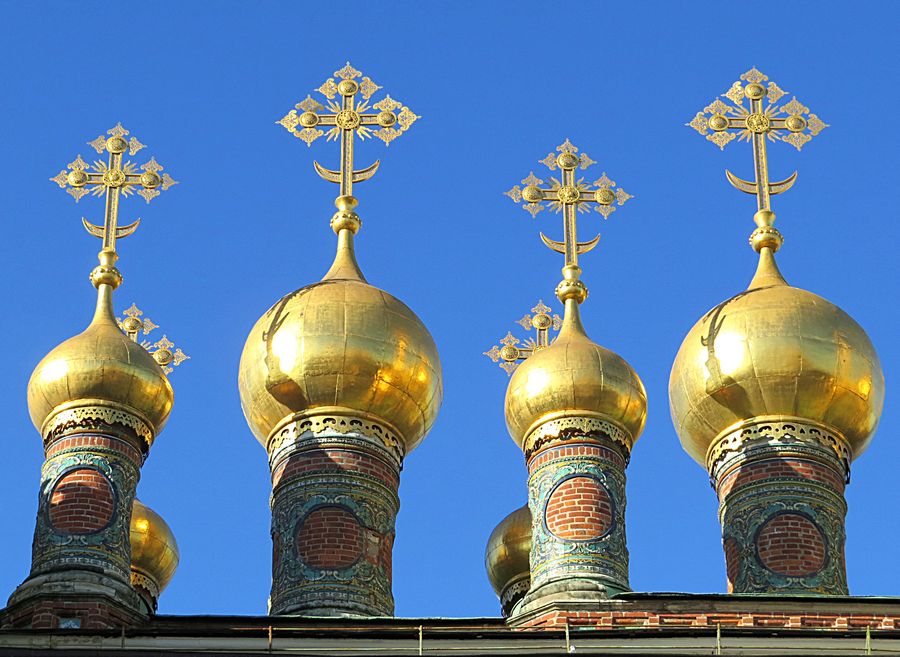
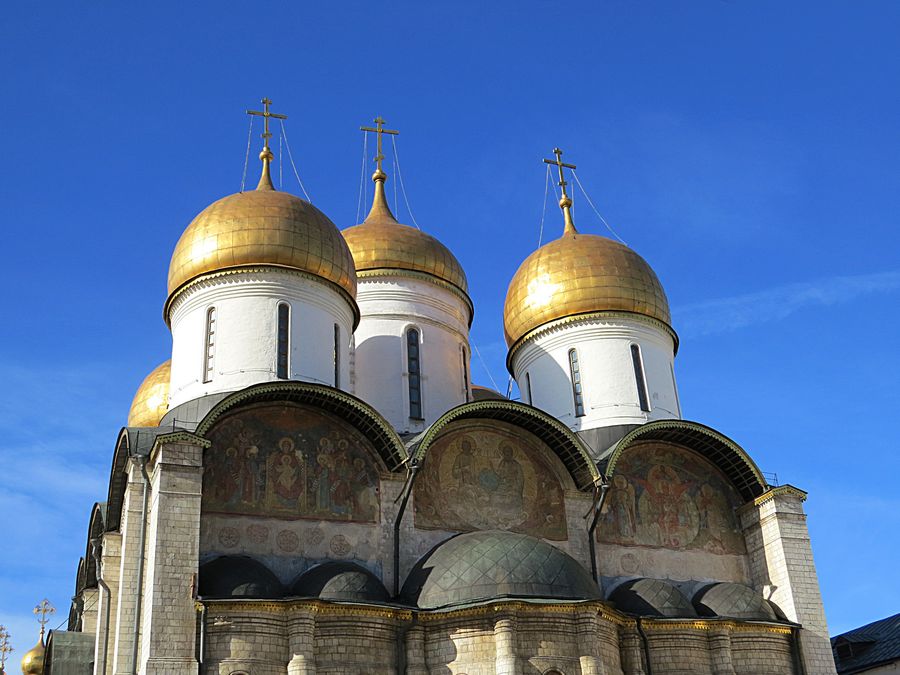
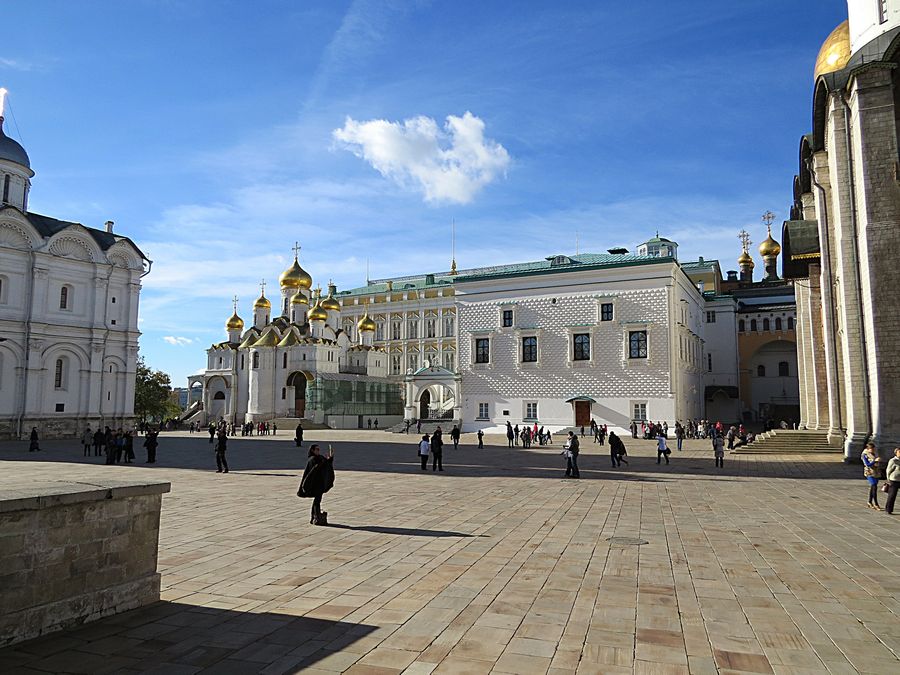
Annunciation Cathedral and Cathedral Square
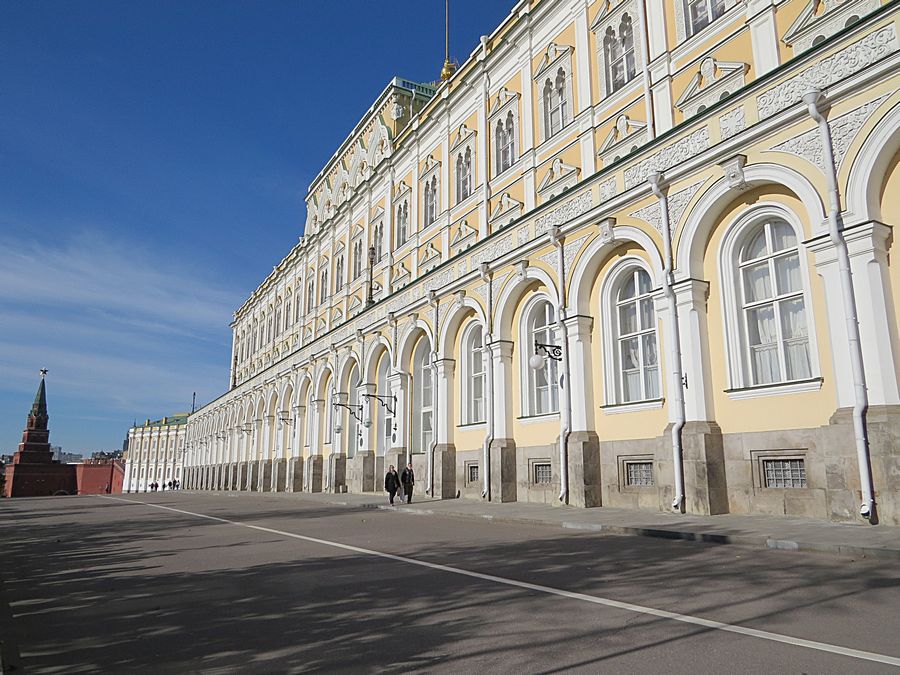
Part of the Great Kremlin Palace, which consists of a group of buildings. The
main section is the most recent, built between 1838 and 1849. Its 375 foot
long facade faces south, overlooking the Moscow (Moskva) River. For
centuries it was the site of the palce of the grand dukes and tsars. It is closed
to the general public.

We exited the Kremlin on the southwest side and walked back toward
Alexander Garden.

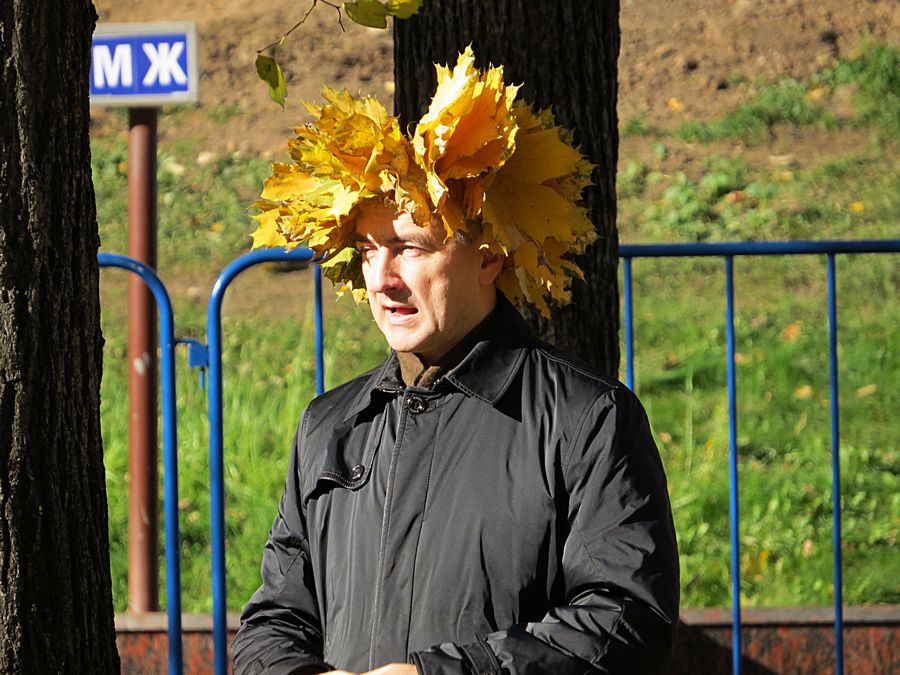
In St. Petersburg, we saw an adult woman taking a photo of herself in a leaf
headdress. In Alexander Garden in Moscow, we saw this man having a photo
taken of himself in a leaf headdress.
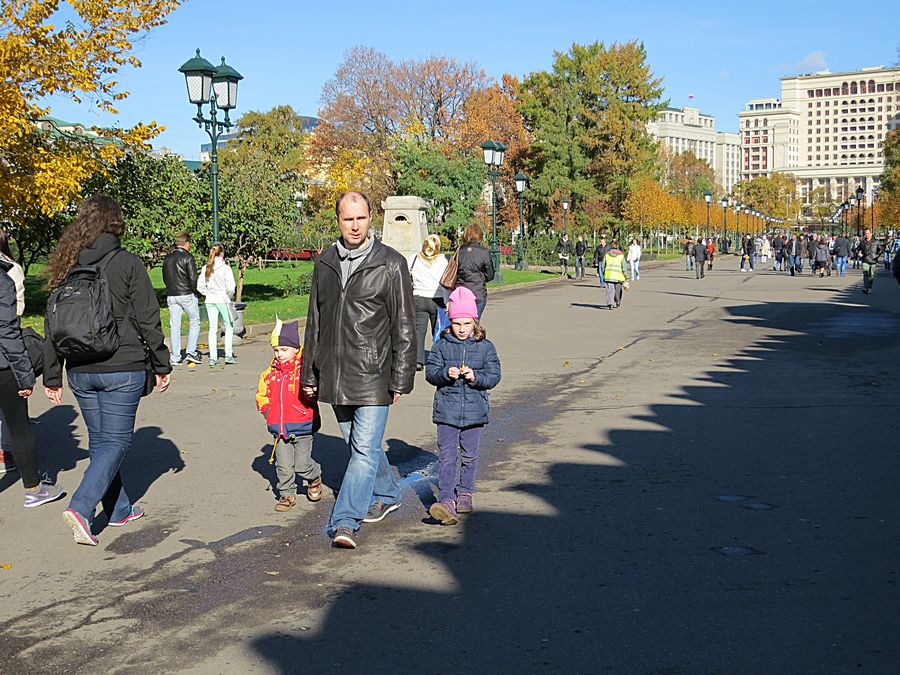
Father walking with his kids in the Alexander Garden outside the Kremlin.
THE END - MOSCOW, RUSSIA
Link to Page Page One of Moscow
Link to Part One - Lithuania
Link to Part Two - Latvia
Link to Part Three - Estonia
Link to Part Four - St. Petersburg, Russia
Pat's Home Page